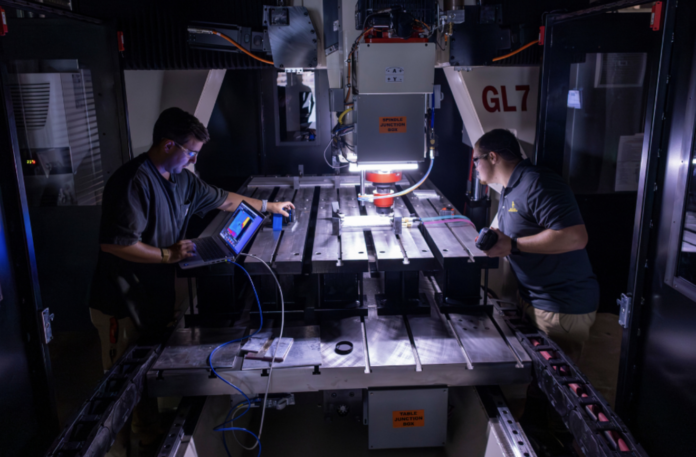
By Kobe Baker | Reporter
In collaboration with teams at NASA, Purdue University, the University of New Hampshire and Astroport, three Baylor professors are working to make space travel more affordable.
The Baylor professors on the project are Dr. Trevor Fleck, assistant professor of mechanical engineering; Dr. Paul Allison, professor of mechanical engineering; and Dr. J. Brian Jordon, professor of mechanical engineering.
Jordon said the project uses technology with a combination of human-made materials and lunar resources to create devices needed to travel in space.
“I think the long-term goal was then to shrink down the scale of the machine into a footlocker-type thing that can be sent into space,” Jordon said.
Additionally, Fleck said the teams are trying to ensure that the process does not sacrifice the performance of what they are creating.
“The fundamental science we’re trying to establish is understanding the entire relationship so that an engineer can go design something with this, process them with these materials and have some idea of how it’s going to perform when they use that part,” Fleck said.
The scale of the project requires constant communication from all of the teams at NASA, Astroport and the three universities.
“I think there are natural challenges in working with multiple institutions, but there’s some really good people,” Jordon said. “We’ve got some really good colleagues at the other institutions and in the private company that we’re collaborating with.”
Fleck said the teams have found community through the project, bringing in many different backgrounds while working toward a common goal.
“It’s kind of meeting with the community through conferences and establishing those relationships and finding unique problems we can collaborate on,” Fleck said.
Fleck said that with large national research teams like this one, more expert perspectives are available to give insight into a project.
“Whenever researchers collaborate, you get to go after these bigger projects and solve these bigger problems that need to be overcome,” Fleck said.
Fleck, Allison and Jordon don’t have a set estimate of how much money the project will save, although sending a satellite into space can currently cost anywhere from $50 million to $400 million for an individual launch.
“Part of this research will identify what is the return on investment — the savings that can be obtained through doing these types of manufacturing approaches,” Allison said.
In September, Fleck, Allison and Jordon also received a $3 million grant from the National Science Foundation, and they said they hope to use the funds to bring in a variety of graduate and undergraduate students to aid them in their research.
“Part of the reason we’re excited is we get to introduce new students to this technology field and expose them to things they may not have an opportunity to,” Jordon said. “And exposing undergrad students to research in our lab, we hope they get bit by the research bug.”